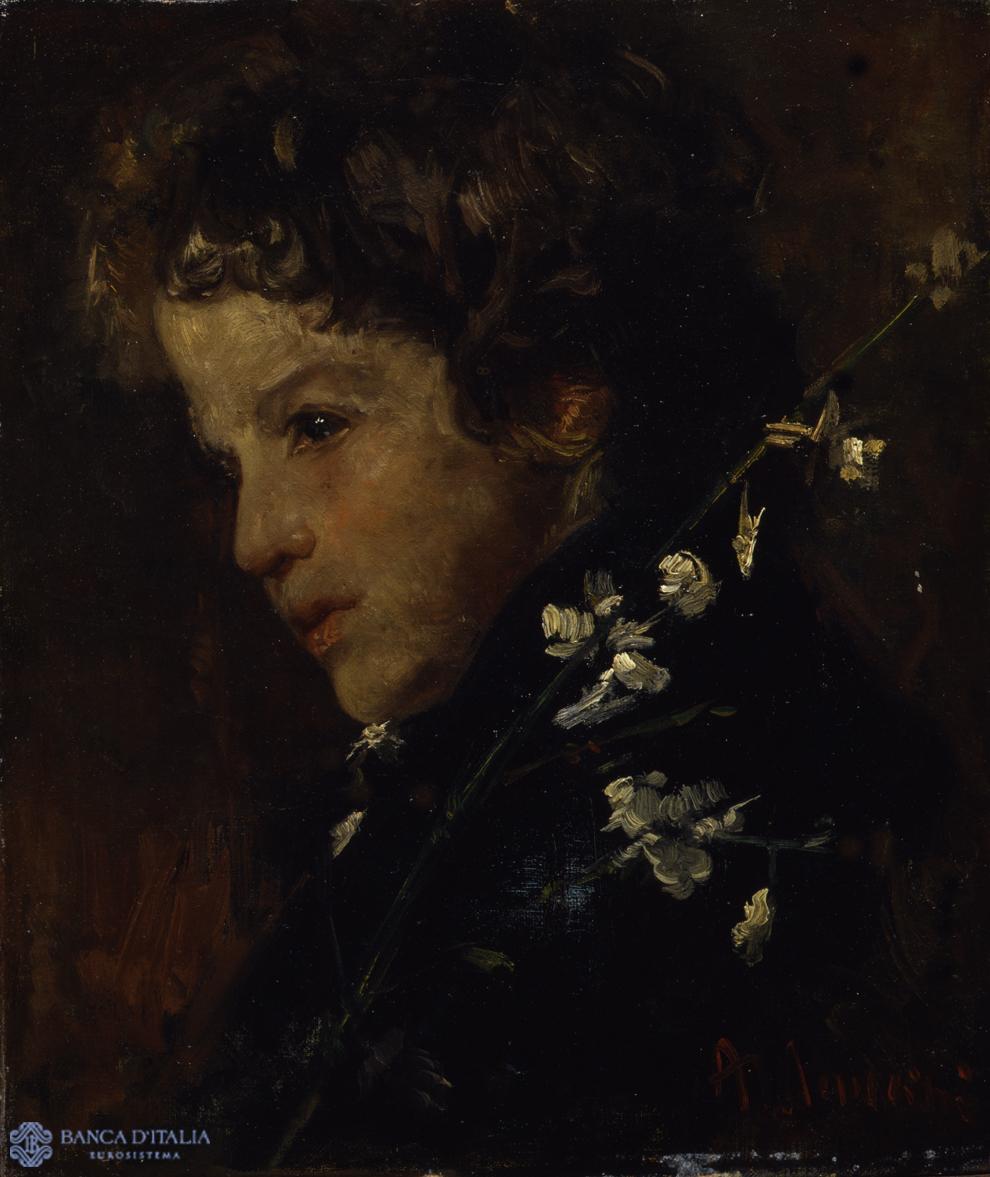The lad’s immature but attentive face emerges from the dark, the effect stemming from the contrast between the light and the dark tones. The branch of white flowers rings out on the jet-black jacket. Beneath a soft mass of curls enlivened by highlights, the lad’s head is bent slightly and turned towards something or someone. His candid gaze is the light of the soul emanating from a pure and gentle face: an image of uncontaminated youth. In the 1870s and 1880s Mancini concentrated on depicting young people (acrobats, waifs, schoolboys, singers, street-urchins, altar boys), who became a recurring theme of his penetrating powers of observation. His sympathy with the humble and the innocent produces painting that is never an ephemeral representation of a “slice of life” or a picturesque sketch, but is the fruit of a deep investigation of the human soul. An “untutored” artist, according to one of the many commonplaces that ran down his reputation as a great painter, Mancini was actually a man of vast visual culture who had travelled and visited museums abroad, eliciting enthusiastic responses from illustrious artists like Sargent and Mesdag. He was also a devotee of the painting of the Italian Cinquecento and Seicento and of such foreign masters of the past as Velasquez and Rubens. Vittorio Pica said of him: “Mancini is an eye, but an exceptional eye”. And the artist himself, in his letters, declared, “I understand good painting. The esteem of the most illustrious artists assured me that I was good not only at doing it but also at understanding it”. His passion for the art of the past produced a style free of all academic traces, and in the same years in which Impressionism was triumphant in Paris, Mancini was coining a bold new style of painting which, in a language both essential and pulsating from the thick impastos, indicated in the impact of light an alternative to the masters of plein air.
Antonio Mancini, I fiori bianchi
I fiori bianchi
Painting
19th century AD
Figurative
Artist
Date
1880
Material and technique
Oil on canvas
Measurements
33 x 26 cm
Compiler
Augusta Monferini

